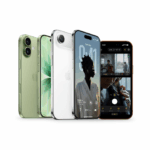Meta has unveiled its most ambitious wearable yet, the Ray-Ban Display smart glasses, as part of its ongoing metaverse and AI vision. Priced at $799, the device combines a discreet heads-up display with a Neural Band wrist controller that lets users operate the glasses using simple hand and finger movements.
The glasses, developed in collaboration with Ray-Ban, are designed to look like everyday eyewear while offering cutting-edge digital features. Unlike previous models that focused mainly on cameras and audio, this version includes a full-colour display inside the lens, visible only to the wearer. It shows information such as navigation prompts, notifications, and live translations.
The highlight is the Neural Band wristband, which uses electromyography (EMG) sensors to detect tiny electrical signals from muscles in the forearm. This allows users to control the glasses with subtle gestures – a pinch, swipe, or tap of fingers – without ever touching the frame or pulling out a phone.
Features and Specifications
- AI Integration: Powered by Meta AI, the glasses can handle tasks like live translation, audio transcription, navigation directions, and messaging via WhatsApp, Instagram, and Messenger.
- Hands-Free Control: Three interaction modes — voice, touch, and Neural Band gestures — give users multiple ways to navigate.
- Battery Life: Up to six hours of continuous use, with the case providing an additional 30 hours of charging. The Neural Band runs independently with around 18 hours of use.
- Design Choices: Available in Black and Sand colours at launch, with more variations expected later.
- Launch & Availability: U.S. sales begin on 30 September 2025, with global rollout to the UK, France, Italy, and Canada scheduled for early 2026.
The launch is another major step in CEO Mark Zuckerberg’s strategy to make wearables the gateway to the metaverse. By merging fashion, AI, and gesture-driven control, Meta hopes to reduce reliance on smartphones and build a seamless ecosystem of mixed-reality devices.
Analysts suggest that the Ray-Ban Display is Meta’s closest attempt yet at mainstream augmented reality – offering utility without the bulk or sci-fi look of traditional AR headsets. The stylish Ray-Ban design is likely to appeal to early adopters who want futuristic tech in a familiar package.
With Apple, Google, and Samsung also advancing in wearable AI, Meta’s Ray-Ban Display is a bold attempt to stay ahead. While not a fully immersive AR headset, it delivers practical, everyday use cases in a form that doesn’t scream “tech gadget.”
If successful, it could reshape how people interact with digital services — not through taps on a screen, but through a pinch of the fingers or a glance at the lens.





